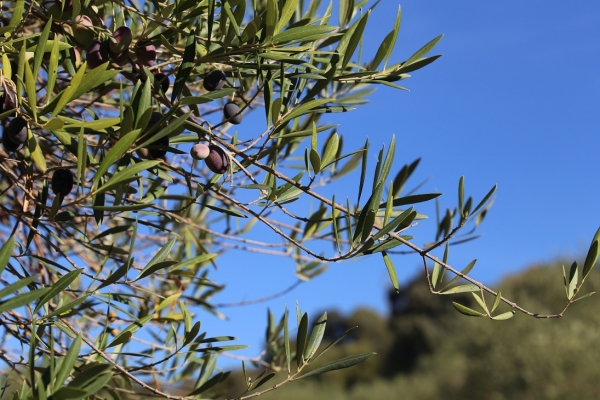The olive tree is one of the most important woody crops in the world, its cultivated area occupying more than 11 million hectares (FAO, 2019). Due to its economic, social and cultural importance, study of the pathogens that affect the tree and its fruit is crucial to find control methods that prevent damage.
Among the foliar diseases that affect the olive tree, anthracnose is considered one of the most important. This disease, popularly known as cankers, is caused by species of fungi of the genus Colletotrichum, and causes high losses on fruit yield and oil quality during epidemic years.
Thus, a team from the María de Maeztu Unit of Excellence - Department of Agronomy at the University of Córdoba (DAUCO) has conducted an international study featuring the specific characterization of a collection of 185 Colletotrichum isolates (samples extracted from olive trees with symptoms of anthracnose and containing the pure organism) from various enclaves around the world.
Previously, only two complex species of the genus Colletotrichum were known to cause olive anthracnose, but, after various taxonomic revisions, up to 18 species of the fungus associated with the disease have been distinguished worldwide. With the aim of obtaining more in-depth knowledge of the biology of the pathogen and, thus, being able to select the most effective control measures against it, this DAUCO team has characterized the collection of Colletotrichum isolates obtained over 25 years of work, and with samples not only from Spain, but also from Australia, Brazil, California, Greece, Italy, Portugal, Tunisia and Uruguay; as well as other hosts susceptible to the disease, such as almonds, strawberries, oranges and pistachios.
In the study, led by researchers from the Department of Agronomy at the UCO Juan Moral, Carlos Agustí and Antonio Trapero "a phenotypic, molecular and pathogenic characterization has been carried out, molecular characterization being the decisive one for the identification of the species", explained Antonio Trapero. "In the case of Colletotrichum, its morphological characteristics do not allow us to differentiate between different species, so we must turn to DNA sequences that tell us how similar some isolates are to others", adds Juan Moral, in order to be able to classify them by phylogenetic species.
After using 7 specific gene regions for this identification, 12 species of Colletotrichum were identified in the collection studied, establishing the most widespread species in Spain, Greece, Tunisia, Portugal and California. In these producing areas there is usually one dominant species and one or two more secondary ones. The highest species diversity was found in Australia, with 8 different Colletotrichum species.
In Andalusia the majority species is Colletotrichumgodetiae, and it has been noted that it is particularly specialized in olive trees, possibly due to a continuous olive-pathogen interaction.
The study has also found significant differences in the virulence of the disease in the culture depending on the species and the origin of the host. "We have seen differences in sensitivity to fungicides between species, and when we inoculate different varieties, differences in virulence are also found between these isolates" stressed Antonio Trapero. Furthermore, "having isolates from many countries shows how even isolates of the same species behave differently depending on the geographical area they come from", specified Carlos Agustí.
With this new study, therefore, another window of knowledge into the biology of the causative agents of anthracnose on olive trees is opened, which will pave the way for progress in the creation of more effective control methods.
Moral, J.; Agustí-Brisach, C.; Raya, M.C.; Jurado-Bello, J.; López-Moral, A.; Roca, L.F.; Chattaoui, M.; Rhouma, A.; Nigro, F.; Sergeeva, V.; Trapero, A. Diversity of Colletotrichum Species Associated with Olive Anthracnose Worldwide. J. Fungi 2021, 7, 741. https://doi.org/10.3390/jof709074


